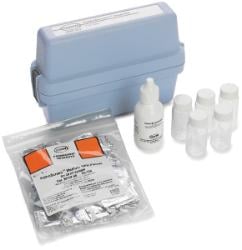
Problem being addressed[edit | edit source]
Coliforms in water have been found to be associated with hydrogen sulphide (H2S)-producing organisms, or bacteria. Water tests in developing countries need to be low-cost and involve minimal equipment.
Detailed description of the solution[edit | edit source]
The H2S test is used to test drinking water for fecal contamination. The test uses common laboratory chemicals and is performed by adding a specified amount of "boiled" water in addition to a common liquid detergent to an H2S paper strip. After drying in a low-heat oven, the test water is collected and stored in a dark room for three days. If the sample contains hydrogen sulfide-producing organisms, the paper and water will turn black and a generally unpleasant smell created.
Manufacturing[edit | edit source]
- Manufacturer: Institute of Applied Sciences, University of the South Pacific
- Manufacturer location: Suva, Fiji Islands
- Availability: H2S tests or chemical reagents may be obtained on a ‘cost of manufacture only’ basis from the Institute of Applied Sciences. HACH chemical company makes the test under the name "Pathoscreen test." Available worldwide.
When and where it was tested/implemented[edit | edit source]
A study of the H2S test was performed in the Pacific Islands, where it was determined that the test is good for testing drinking water supplies for fecal contamination in the Pacific Islands, in particular, the remote rural and outer island areas. A multi-country inter-comparison study took place in 1990. Also in 2011, a systemic review and meta-analysis of H2S tests versus standard indicator bacteria tests for fecal contamination of water were conducted in multiple settings. Further analyses of this device are needed.
References[edit | edit source]
Peer-reviewed publication[edit | edit source]
Wright, Jim, et al. (2011). The H2S test versus standard indicator bacteria tests for faecal contamination of water: systematic review and meta-analysis. Tropical Medicine and International Health, 17(1), 94-105.
Internally generated reports[edit | edit source]
Mosley, Luke M., and Donald S. Sharp. (2005). The Hydrogen Sulphide (H2S) Paper-Strip Test. SOPAC Technical Report 373, 1-20.